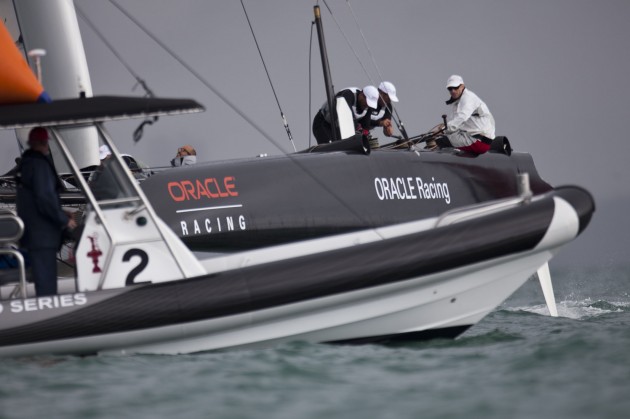Will Cup racing set new standards? Rebecca Hayter reports on the latest high tech developments in AC race management
The 34th America’s Cup is bounding ahead like a giant kangaroo – from monohulls to catamarans, soft sails – who even knew that term two years ago? – to wingsails, from intensely guarded designs to – gasp! – production-built AC45s, from one design rule to two: the AC45 and AC75, a youth series and now, well, if they keep this up, we are going to need soothing cups of camomile tea served at the press conferences.
Here is the latest: you’ve all heard – and perhaps even contributed to – serious concern that the AC72 catamarans may end up being two extremely fast boats racing a million miles apart, which will be about as exciting to watch as, um, a pair of 80ft, 25-tonne monohulls drifting about a million miles apart. What we really want is these big cats missing each other by a whisker.
So AC regatta director Iain Murray and his team have delivered – and over the last two days ACRM, Emirates Team New Zealand, Oracle and Artemis have been testing a new system on AC45s on the Hauraki Gulf.
There will be virtual boundaries down each side of the course; their separation distance will be varied for strong or light winds. The boundaries will be depicted on screens mounted one in each hull, in front of the skipper. The electronics can measure the yacht’s position accurately to within 2cm, updated 10 times a second. As the boat approaches a virtual boundary, the screen bleeps and gives a countdown, expressed as a positive in metres – for example, +20m, +15m….+5m.
If they cross the virtual boundary, the countdown becomes a negative in metres and the umpires – in a shore-based booth – will issue a penalty of four boat lengths: 60m on the AC45, 100m on the AC72.
To enforce the penalty, Murray says, “We tack them electronically. We set a line across the wind and when they fall back on that by sixty metres, they’ve cleared the penalty.” The red penalty light on the boat’s screen changes to green to show it is cleared. It carries a text message service so when a boat calls for room on another boat or protests, it comes up as a text.
Murray says the race rules have avoided the traditional 720 or 360 penalty. “We want to penalise the boats, but we also want to keep them in the race.
“Given time, this will develop into a proper chart plotting type thing where you see the course, the ocean and everything else,” Murray says. Television audiences will have the same view as the umpires.
Two on-water umpires on jetskis will keep the shore-based umpires aware of likely developments on the course via headset radio. Principle race officer John Craig says it will take the technological side of the sport to a new level. “The virtual boundaries create an arena that forces the boats back to the centre.”
ACRM will use the data to design the format and length of the courses.




